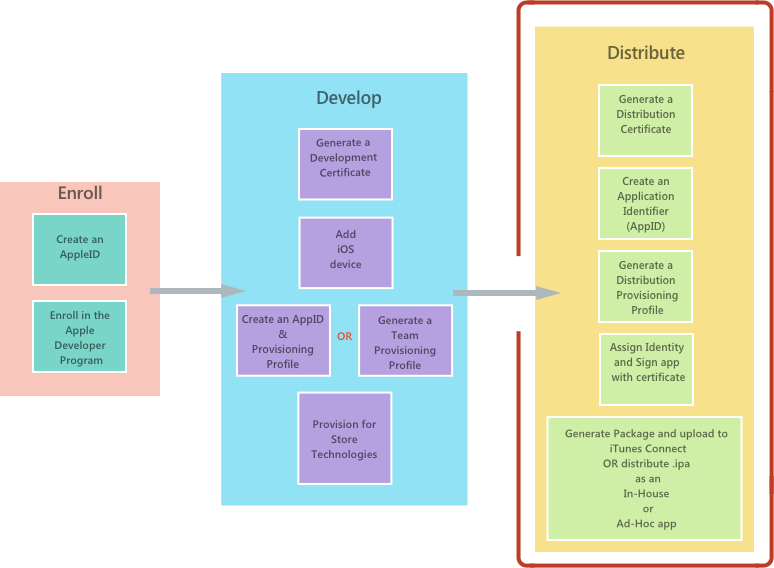React Native ~ iOS App Distribution - rohit120582sharma/Documentation GitHub Wiki
Once an .iOS app has been developed, the next step in the software development lifecycle is to distribute the app to users, as shown in the highlighted section of the diagram below:

Apple provides the following ways to distribute an iOS application
- The App Store
- In-House (Enterprise)
- Ad Hoc
All these scenarios require that applications be provisioned using the appropriate provisioning profile. Provisioning profiles are files that contain code signing information, as well as the identity of the application and the intended distribution mechanism. For the non-App Store distribution they also contain information about what devices the app can be deployed to.
This is the main way that iOS applications are distributed to consumers on iOS devices. All apps submitted to the App Store require approval by Apple. Apps are submitted to the App Store through a portal called iTunes Connect.
It is important to note that to use iTunes Connect, and therefore publish an app to the App Store, you must be part of either an individual or organizational Apple Developer Program.
Sometimes called Enterprise Distribution, in-house distribution allows members of the Apple Developer Enterprise Program to distribute apps internally to other members of the same organisation. In-house distribution has the advantages of not requiring an App Store review, and having no limit on the number of devices on which an application can be installed. However, it is important to note that Apple Developer Enterprise Program members do not have access to iTunes Connect, and therefore the licensee is responsible for distributing the app.
An .iOS applications can be user-tested via ad hoc distribution, which is available on both the Apple Developer Program, and the Apple Developer Enterprise Program, and allows up to 100 iOS devices to be tested. The best use case for ad hoc distribution is distribution within a company when iTunes Connect is not an option.